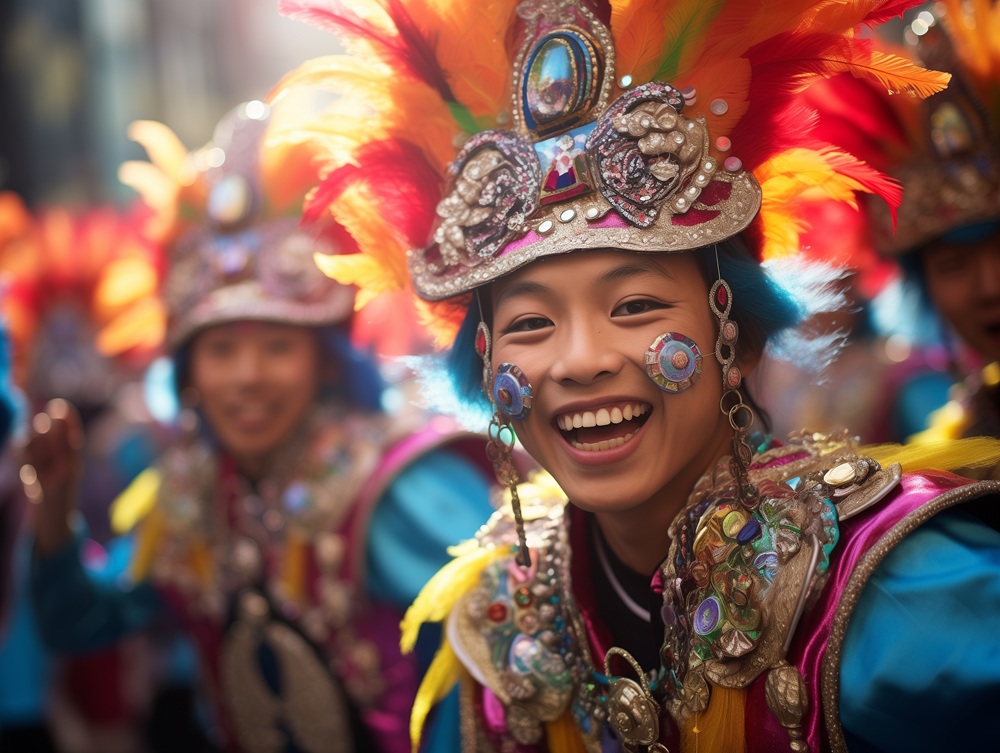Down here in New Orleans, it doesn’t take long to realize that calendars don’t run on the same schedule as everywhere else. Sure, January brings resolutions and February brings Valentine’s Day. But in this city, January brings king cake, February brings beads flying through the air, and half the spring is measured in parades instead of weeks.
That’s the magic of living here. The culture spills out into the streets, and the streets become the stage. For anyone paying attention, those same streets double as one of the greatest advertising platforms on the planet.
Mardi Gras: The Original Moving Billboard
Let’s start with the obvious. Mardi Gras is a logistical miracle. Thousands of people line the streets, waiting for floats that move slow enough for the crowd to really study what’s going on. And what’s going on? Color, costumes, lights, music, and—if someone planned well—logos.
Parade floats aren’t just rolling parties. They’re rolling billboards. Throw bags, cups, and beads aren’t just trinkets; they’re mobile marketing material. Hand someone a cup during Mardi Gras, and there’s a good chance it’ll be sitting in their kitchen cabinet years later. That’s advertising with a shelf life longer than most streaming shows.
Beyond the Big One
But Mardi Gras is just the headline act. In New Orleans, every season brings another festival. Crawfish season? That’s a festival. Jazz Fest? That’s two weekends of music, food, and tens of thousands of people walking around with open eyes and open wallets. Even second lines—smaller, neighborhood-driven parades—become a stage for anyone who understands that attention is currency.
A crawfish boil in Baton Rouge, a seafood festival on the Northshore, or a neighborhood block party in Mid-City all carry the same principle: when people gather, they notice. And when people notice, businesses have an opportunity.
Why It Works
Advertising usually fights for attention. Online banners compete with a million distractions. Commercials get skipped. Billboards are passed at 70 miles an hour. Festivals flip that script. Festivals gather people who are excited to look around. They’re not rushing—they’re lingering. They want to see, to taste, to grab, to collect.
That means a banner on a stage, a booth with samples, or even a stack of branded koozies has a real shot at sticking. The crowd isn’t avoiding the message. The crowd is looking for it.
The Humor in It
Now, let’s be honest. New Orleans festivals don’t always go according to plan. Rainstorms show up uninvited. Someone in the crowd decides the beads belong more on a tree than around a neck. And at least one person every year tries to balance a giant daiquiri, a turkey leg, and a lawn chair all at once. (Spoiler: the turkey leg always loses.)
But here’s the thing—that unpredictability is part of the charm. Festivals aren’t polished corporate events. They’re messy, loud, and very, very human. And that’s exactly why advertising there feels real. Nobody remembers the perfectly timed social media ad that ran on a Tuesday. But they’ll remember catching a T-shirt at a parade, or hearing a local band at a sponsored stage.
Small Festivals, Big Value
It’s tempting to think only Mardi Gras or Jazz Fest matter. But ask any local, and they’ll tell you the smaller gatherings hit just as hard. A po-boy festival, a gumbo cook-off, or a neighborhood crawfish boil might not make the news, but they make community. And that’s where loyalty is built.
The truth is, someone who sees a business at their neighborhood festival will remember it long after the banners come down. Not because it was loud or flashy, but because it was present. Sometimes showing up is the most powerful form of advertising there is.
Cultural Respect
Of course, there’s a balance. This is New Orleans. The culture isn’t just an excuse for marketing—it’s a sacred thing. Businesses that show up with respect for the traditions are welcomed. Those that treat it like a cash grab get tuned out fast.
That’s why success in this space isn’t about forcing a message. It’s about joining the rhythm. When a brand looks like it belongs in the parade or at the crawfish table, the connection feels natural. When it doesn’t, it sticks out like a guy in a three-piece suit at a swamp tour.
Looking Ahead
The number of festivals in Louisiana isn’t shrinking anytime soon. In fact, it seems like new ones pop up every year. If it crawls, flies, swims, or grows in this state, someone will eventually build a festival around it. And every one of those gatherings will bring together crowds who are ready to notice.
That’s why local businesses should see festivals as more than fun. They’re opportunities—rolling, boiling, music-filled opportunities. And the best part? The advertising doesn’t feel like advertising. It feels like participation.
Closing Thoughts
Festivals in Louisiana blur the line between culture and commerce. They’re not just a party. They’re not just a marketing stage. They’re both. And when handled right, they create memories that last far beyond the final song or the last bead tossed.
In New Orleans, the biggest party is also the biggest billboard. The trick is recognizing that every parade, every festival, and every boil is a chance to show up, join in, and be remembered. And if a little crawfish juice lands on a logo along the way? Well, that just makes it authentic.



